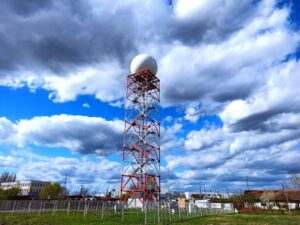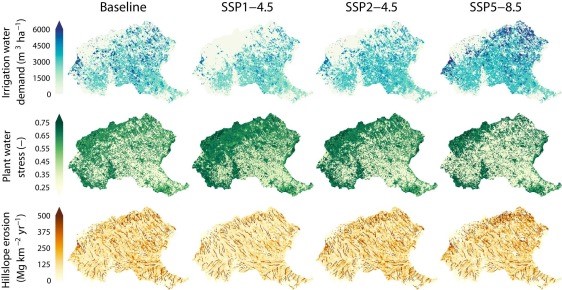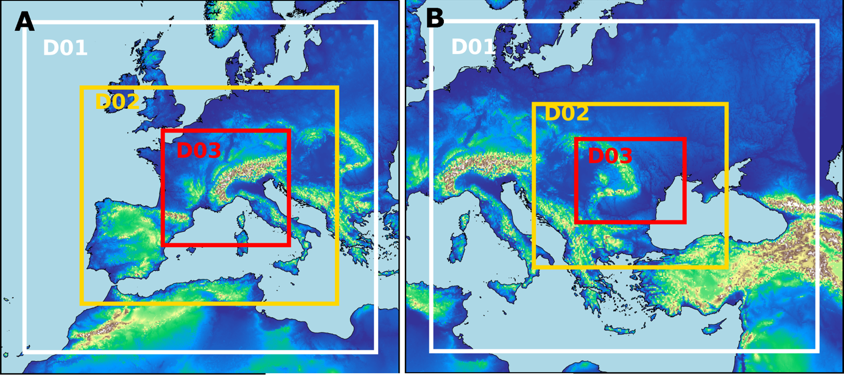
A new weather radar network for improving the ability to monitor and predict extreme rainfall events over Romania
MeteoRo features state-of-the-art Doppler radar technology capable of detecting precipitation intensity, wind patterns, and storm development in real-time starting from 2024. This network consists of 7 S-band dual-polarization Doppler radars strategically placed across Romania, ensuring comprehensive coverage from the Carpathian Mountains to the Black Sea coast, in the following locations: Bucharest, Medgidia, Bârnova, Târnaveni, Craiova, Oradea and Timișoara. The new network is designed to provide real-time data and better monitoring of atmospheric conditions, enabling meteorologists to predict severe weather with greater precision. In the MAGDA Project, assimilation of improved weather radar data into the WRF (Weather Research and Forecasting) model can significantly enhance the accuracy of weather forecasts for better decision-making in the agriculture sector.
Seven New Weather Radars Deployed Throughout Romania
The installation of the new weather radars comes in response to an increase in extreme weather events in recent years, including heavy rains, floods, and severe storms that have affected various regions of Romania. The enhanced capabilities will allow for better tracking of storms and more accurate forecasting, ultimately leading to improved public safety measures.
Local authorities and emergency services have expressed strong support for the initiative. “Timely information about severe weather can be the difference between safety and disaster,” said Mihai Popescu, head of Inspectorate for Emergency Situations, Cluj.
In addition to improving weather forecasting, the radar systems will contribute to climate research by providing valuable data on local weather patterns and changes over time. Researchers from MeteoRomania are eager to utilize the new technology to enhance their studies and gain insights into Romania’s changing climate.

Weather Radar assimilation into Numerical Weather Prediction Models (NWPMs) for agriculture
Agriculture is highly vulnerable to extreme weather events such as heavy rainfall, hail, and drought. By integrating radar data, NWPMs can issue timely alerts and warnings, allowing farmers to make informed decisions about planting, irrigation, and harvesting. In addition, predicting localized weather events will allow farmers to optimize irrigation schedules and apply fertilizers and pesticides at the right times, thereby improving yield and reducing waste.
Climate Adaptation
As climate change alters weather patterns, the need for adaptive strategies in agriculture becomes essential. Weather radar assimilation provides insights into emerging trends, helping farmers adjust their practices and crops to better suit changing climatic conditions. Integrating weather radar data into NWPMs enhances the resilience and sustainability of agricultural systems. By providing farmers with precise and timely weather information, it supports better decision-making, ultimately leading to increased productivity and food security in a changing climate.
Author: Zenaida Chitu and Sorin Burcea
Links
Keywords
MeteoRomania, Weather radars, Agriculture


